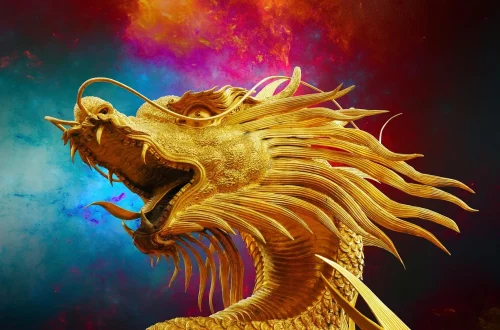
Exploring Long Penis Images: A Visual Journey into Anatomy and Art
The human body has been a subject of fascination for centuries, inspiring artists, scientists, and thinkers alike. Among the myriad aspects of human anatomy, the male genitalia has often elicited intrigue and curiosity, both for its biological function and its representation in art and culture. From ancient sculptures to modern photography, depictions of the penis have served various purposes, including symbolism, fertility, and even humor.
In many cultures, the penis is not merely a biological organ but a symbol of virility and masculinity. Artists have explored this theme in various forms, creating works that celebrate or critique societal norms associated with male sexuality. This duality of representation—both anatomical and artistic—has led to a rich tapestry of interpretations that invite discussion about the human experience.
Moreover, the exploration of long penis images transcends mere anatomical curiosity; it intersects with themes of identity, power, and societal expectations. As we delve deeper into this visual journey, we will uncover how these images reflect not only biological realities but also the complexities of human emotions and relationships. Whether viewed through a medical lens or an artistic perspective, the representation of the penis continues to evoke fascination and discourse about what it means to be human.
The Anatomy of the Penis: Understanding Structure and Function
To appreciate the artistic representations of the penis, it is essential to first understand its anatomy. The penis is a remarkable organ composed of various parts, each with its unique function. The primary components include the shaft, glans (the head), and the erectile tissues, namely the corpora cavernosa and the corpus spongiosum.
The shaft serves as the main body of the penis and is made up of erectile tissue that can fill with blood, resulting in an erection. The glans is sensitive and plays a crucial role in sexual arousal and pleasure. The two corpora cavernosa run along the length of the penis, while the corpus spongiosum surrounds the urethra, allowing for the passage of urine and semen.
Understanding the function of these components can enhance our appreciation of artistic representations, as artists often highlight the anatomy’s complexity and beauty. For instance, in classical sculptures, the emphasis on muscle tone and form can reflect ideals of strength and virility that were celebrated in ancient societies.
Moreover, the penis’s anatomy has been a focal point in medical studies, exploring variations in size and shape. While some may view these differences with stigma or embarrassment, it is essential to recognize that anatomical diversity is a natural aspect of human biology. This understanding can foster a more positive and inclusive discourse around male sexuality, moving away from unrealistic standards often perpetuated by media and culture.
In summary, the anatomy of the penis is a complex interplay of function and form. Recognizing its structure allows us to appreciate the artistic interpretations that celebrate or critique its representation. Whether in medical textbooks or art galleries, the penis remains a symbol of both biological function and cultural significance.
Cultural Representations: The Penis in Art and Literature
Throughout history, the penis has held a prominent place in art and literature, often serving as a symbol of power, fertility, and masculinity. Various cultures have embraced or shunned these representations, leading to diverse interpretations that reflect societal attitudes toward sexuality.
In ancient civilizations, such as the Greeks and Romans, the penis was often depicted in sculptures and pottery as a representation of virility and strength. These artworks celebrated the male form and its capabilities, often idealizing physical prowess and reproductive power. For instance, the famous Greek statue of the god Hermes showcases an idealized male body, emphasizing the beauty and strength attributed to the male figure.
Conversely, some cultures have approached the depiction of the penis with more restraint. In certain periods of history, especially during the Victorian era, discussions about male anatomy were often taboo. Artistic representations were either minimized or stylized in ways that obscured the natural form. This tension between celebration and censorship has persisted into modern times, where the penis continues to be a subject of both fascination and controversy.
In contemporary art, various artists have utilized the penis as a medium to challenge societal norms surrounding masculinity and sexuality. Works that feature exaggerated or abstract representations often critique traditional views, prompting discussions about gender, identity, and power dynamics. For example, the works of artists like Jeff Koons and Richard Prince often incorporate sexual themes that challenge viewers to reconsider their perceptions of masculinity and the male body.
Literature also plays a significant role in exploring the symbolism of the penis. Many authors use this imagery to delve into themes of power dynamics, identity, and vulnerability. Classic literature often includes references to male anatomy in ways that reveal societal attitudes toward masculinity and sexuality, offering insights into the psychological and emotional landscapes of male characters.
In conclusion, the cultural representations of the penis in art and literature reveal a complex interplay between biology, identity, and societal norms. These depictions serve as a reflection of the values and beliefs of different cultures, highlighting the significance of the penis beyond its anatomical function. As we continue to explore this visual journey, we gain a deeper understanding of how these representations shape our perceptions of masculinity and human sexuality.
Contemporary Perspectives: The Penis in Modern Media
In today’s digital age, the representation of the penis has evolved significantly, particularly in modern media. With the rise of the internet and social media platforms, images of the penis have become more accessible, leading to a proliferation of both artistic and explicit content. This accessibility has sparked discussions about body image, consent, and the portrayal of male sexuality.
Social media has become a platform for individuals to express themselves and their bodies openly. Many artists and influencers use these platforms to challenge traditional norms surrounding male anatomy, promoting body positivity and self-acceptance. This shift in perspective encourages discussions about the diverse representations of the penis, moving beyond the conventional portrayals that often dominate mainstream media.
However, the increase in explicit content related to the penis also raises concerns about the potential for objectification and unrealistic expectations. The prevalence of idealized images can contribute to body image issues among men, leading to feelings of inadequacy or insecurity. This phenomenon underscores the importance of promoting a healthy narrative around male anatomy that embraces diversity and encourages acceptance of all body types.
Moreover, the representation of the penis in modern media often intersects with discussions about consent and sexual health. As conversations about masculinity evolve, there is a growing emphasis on the importance of understanding consent and respectful communication in sexual relationships. Media representations can play a significant role in shaping societal attitudes, making it crucial for creators to approach these topics responsibly.
In summary, contemporary perspectives on the penis in modern media reflect a complex landscape of representation, self-expression, and societal attitudes. As we navigate this digital age, it is essential to foster discussions that promote body positivity while addressing the challenges posed by unrealistic portrayals. By doing so, we can cultivate a more inclusive and accepting dialogue around male anatomy and sexuality.
Conclusion: The Ongoing Journey of Exploration and Understanding
The exploration of long penis images serves as a multifaceted journey into anatomy, culture, and art. From understanding the biological structure to examining cultural representations and contemporary perspectives, this visual journey sheds light on the complexities of male sexuality and identity.
As we reflect on this topic, it is crucial to recognize the diverse narratives that surround the penis. By embracing a more inclusive dialogue that celebrates anatomical diversity and challenges societal norms, we can foster a healthier understanding of male sexuality. This journey is not merely about the physical form but delves into the emotional and psychological aspects that shape our perceptions of masculinity.
In conclusion, the representation of the penis, whether in art, literature, or modern media, continues to evolve. As we engage with these depictions, let us strive for a more nuanced understanding that appreciates the beauty of diversity in all its forms. Through this exploration, we can cultivate a deeper appreciation for the human experience and the myriad ways in which our bodies tell our stories.
*Disclaimer: This article is for informational purposes only and should not be considered medical advice. For any health-related concerns, please consult a qualified healthcare professional.*




